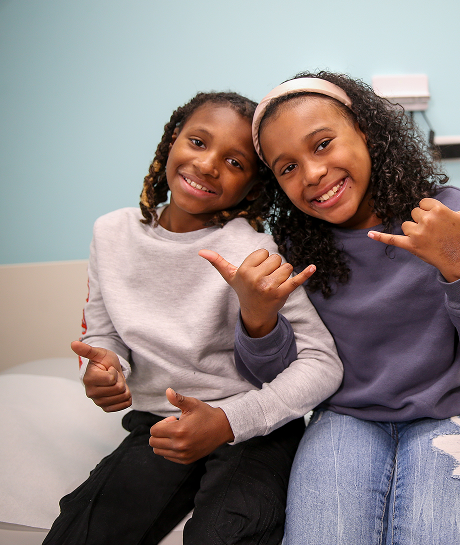type 2 diabetes info
We’ve included highlights from each section, but you can read more information from some sections by viewing the PDF here.
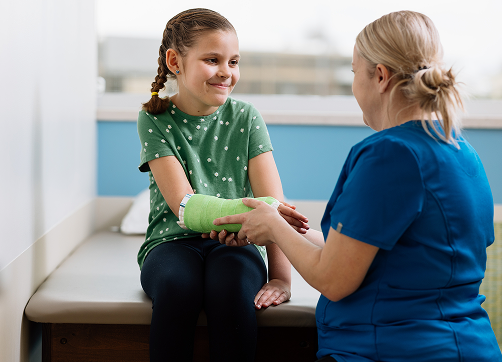

how often does my child need to be seen?
Some patients are admitted when they are first diagnosed with diabetes. After your child is discharged, we will schedule a follow-up visit for one to two weeks after that, and then in one month.
After that, routine appointments will be scheduled every 2-3 months, maybe sooner.
For diabetes clinic appointments to go as smoothly as possible, we need your help.
what do I need to bring with me to appointments?
Please come prepared with:
- Your written blood sugar records from the last two weeks
- All home meters
- List of prescriptions
- Any questions or concerns you have
If you do not bring your meter and blood sugars, we may need to reschedule your appointment. We need this information to make sure we accurately assess your child, and give the right recommendations.

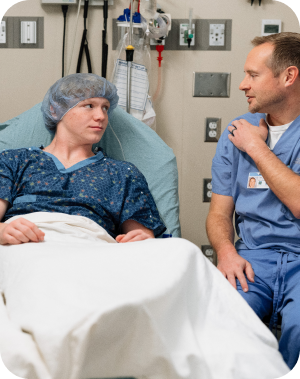
how long will appointments be?
When coming to clinic, please allow one hour to meet with team members. You will always be seen by the physician. You may also meet with a nurse, dietitian and social worker.
how long before my appointment do I need to arrive?
- Routine clinic: At routine visits, a hemoglobin A1C lab is drawn. This can be drawn in the clinic during your appointment. If you choose to go to lab to have this drawn, then you must arrive in the lab 30-60 minutes before your scheduled appointment. After blood is drawn, go immediately to the diabetes clinic and sign in.
- Fasting lab work (done yearly): Once a year, you must arrive in the lab one hour before your appointment. This will allow enough time for blood work to be drawn, insulin given and breakfast eaten. When finished, go straight to the diabetes clinic and sign in.
If you are late for the appointment, we may need to reschedule you at a later date.


other tips:
- Schedule follow-up appointments before leaving the clinic. You can also schedule or reschedule appointments in MyKidsChart.
- When needing school or driving forms:
- Complete the parent section of the forms
- Provide a self-addressed stamped envelope
- Allow about one to two weeks for forms to be completed
- Forms will be mailed unless a fax number is provided. To fax the form, a release of information (ROI) form must be completed and signed prior to the form being faxed. The ROI form is valid for a year.
All school, work and sports physicals need to be done by your primary care physician.

what is diabetes?
Diabetes is a serious lifelong illness that affects how the body uses food. The food we eat is broken down into glucose (sugar). Glucose is our body’s main source of energy. Our body uses glucose in the following ways:
Insulin acts as a key to unlock the cell. Insulin allows the sugar to move from the bloodstream into the cells. The cells can then use the sugar as energy.
- The food we eat is turned into sugar through digestion.
- The sugar moves into the blood stream.
- When our body senses an increase in the blood sugar, it sends a signal to your pancreas. The pancreas is a part of the body that lies behind the stomach.
- The pancreas makes insulin and sends it into the bloodstream.
- Insulin acts as a key to unlock the cell. Insulin allows the sugar to move from the bloodstream into the cells. The cells can then use the sugar as energy.
Just as a car will not run without gasoline, our bodies will not “run” without sugar for fuel. Think of this being similar to a car with plenty of gas (or fuel) but there is not a key to start it. The sugar (the fuel) in our body will not do us any good unless we have insulin (the key) to allow it to go into the cells.
In people with diabetes, this system doesn’t work. A person with diabetes has either lost the ability to produce insulin or does not respond to the insulin normally.
- Due to lack of insulin, sugar builds up in the bloodstream instead of going into the cells of the body.
- The increased blood sugar causes water and electrolytes to begin to leave cells and enter the bloodstream. This leads to increased urination, dehydration and thirst


the signs of high blood sugar
- Increased thirst
- Possible weight loss
- Increased urination
- Blurry vision
- Increased hunger
- Decreased energy level
- Frequent infections
*sometimes people with type 2 diabetes have no symptoms
what causes type 2 diabetes?
- Heredity may play a part in who develops diabetes. Having diabetes in the family does not mean that it will be automatically passed on. But, it does tend to run in families.
- Obesity – Having too much body fat can cause your insulin to not be as effective.
- High risk lifestyle (inactivity) – Not getting enough exercise and eating a high sugar and high fat diet
- Ethnic origin – Some ethnic groups get diabetes more than others. US minority groups (American Indians, Asians/Pacific Islanders, Hispanics, African Americans) have a higher chance of getting type 2 diabetes than non-Hispanic whites.


how to manage type 2 diabetes
- Diabetes is a chronic condition that can be managed. Diabetes can be managed with a treatment plan that includes taking control of your lifestyle. Lifestyle changes include:
- Eating a low-sugar and low-fat diet
- Exercising 30 to 60 min per day
- Taking medication to control high blood sugars
Some type 2 patients can go into “remission” with meal planning, exercise and weight management.
goals for diabetes management
- Blood sugar levels as normal as possible
- Normal physical growth and development
- Normal social development
- The ability to care for your child, or for your child to care for themselves depending on age
- Freedom from complications, both now and in the future.
The management for type 2 diabetes initially involves diet, lifestyle modification and oral medication if A1C is less than 9%. If initial A1C is greater than 9%, or diabetes control worsens despite oral medication, insulin may be added.
A1C
what is A1c?
A1C is a blood test that measures how much a person’s blood sugar levels have been in and out of the healthy range during the last 2-3 months. A higher A1C can happen when someone’s blood sugars have been higher than their healthy range.
what is the goal for A1C?
In the Standards of Medical Care in Diabetes – 2019, the American Diabetes Association (ADA) recommends:
- Children and teens (under 18 years old): A1C target less than 7.5%
- Non-pregnant adults (18 years old and older): A1C target less than 7%


The ADA also says that A1C targets should be personalized by his/her doctor. Your child’s doctor will look at the following before giving a target specific to your child:
- Age
- Risk for low blood sugar and if he/she can tell when having a low
- How long has he/she had diabetes
- If he/she has complications
recommended treatment of type 2 diabetes
- If A1C is <9% start metformin at diagnosis.
- If A1C is >9% start metformin and night time insulin (long acting or basal insulin).
- If your child is very sick, with blood sugar >600mg/dl, bring them to the emergency department.
- In the future, your child’s doctor may prescribe medicines.
what causes complications?
The most important factor is high blood sugar over a long period of time. Eventually, high blood sugar may cause damage to the small and large blood vessels. The blood vessels in the eyes and kidneys are the most frequently damaged. Complications can occur after the person has had diabetes usually for at least 10 years. You can delay or lessen how severe the complications are by helping to keep your child’s diabetes in good control, and by following the general health care tips in this page.
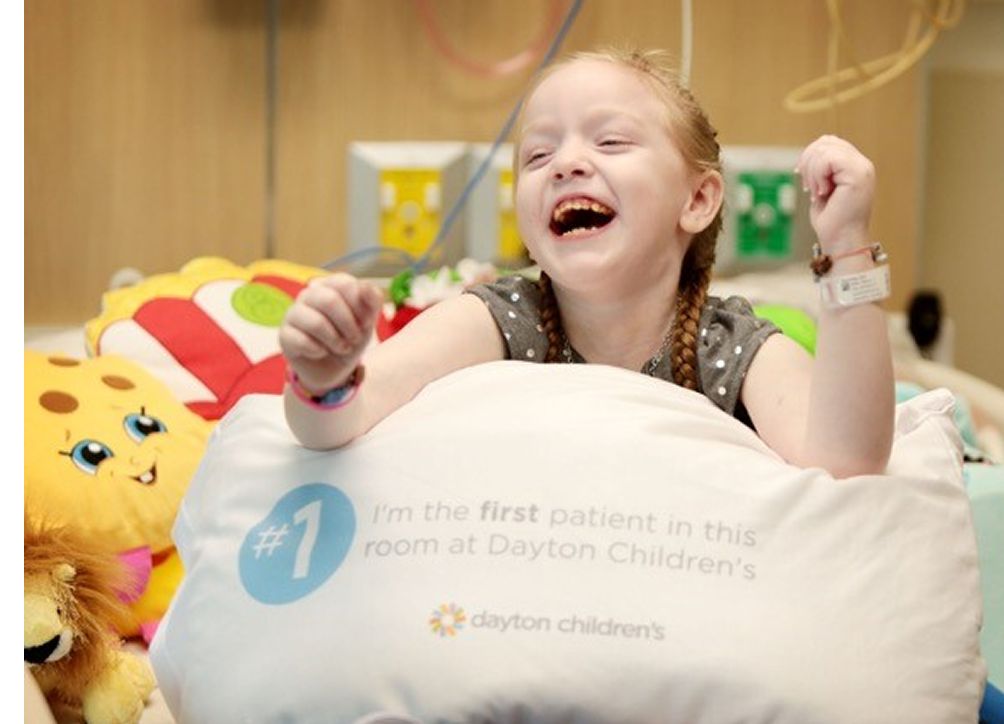

blood sugar testing at home
The most accurate way to monitor diabetes control is by checking your child’s blood sugar. Blood sugar is also called blood glucose. This can be done easily at home by using a glucose meter. The diabetes nurse educator will provide a glucose meter for your child and show you how to use it.
keep the following points in mind for using your meter:
- You should only use a meter that has a date, time and memory.
- Make sure the correct date and time are programmed in the meter. This is really important to be able to review the blood sugars in the meter.
- Each meter has a 1-800 number on the back for help. You can call that number 24 hours a day, seven days a week. The meter manual is also helpful if you have problems or forget information.
- It is important to use the proper strip for your glucose meter. Each meter has strips specifically made for that meter. Check the expiration date on each new bottle of strips.
- Your meter will alert you when the batteries need to be replaced. Keep extra meter batteries on hand. The batteries can be bought at local pharmacies.
- Do not expose the meter to extreme heat or cold, such as leaving it in the car in the winter or summer.


how often do I need to do blood tests?
- The diabetes doctor or nurse will instruct you on how many times each day you should check your child’s blood sugar. The frequency will depend on how your child’s diabetes is being treated (typically 2-3 times per day).
- Check if your child complains of feeling ill or has symptoms of a low blood sugar.
- You will need to check more often when your child starts a sport or increases their activity. This will affect their blood sugar.
what to do with blood sugar results?
- At first, keep a written record of your results. These records will help you see patterns and manage them correctly, and understand dose adjustments. The diabetes team can provide you with blood sugar records that you can use.
- Call in blood sugars to the doctor on a routine basis. After discharge from the hospital, this may be done daily. After the first follow-up appointment, you should call us as the doctor directs, and when you suspect a need for medication changes.
- Confirm written records with the meter’s memory.


why is blood sugar testing so important?
Testing your child’s blood sugar helps you to know:
- If their blood sugar is in the target range
- How their blood sugar is affected by food, exercise and stress
- How well their medication is working
what is my child’s target blood sugar?
- Your child’s doctor may give you some other guidelines to follow, but in general:
- Fasting/before eating breakfast, blood sugar should be less than 125mg/dl on the blood glucose meter, preferably less than 100 mg/dl.
- Pre-meal (before lunch or dinner) should be less than 200 mg/dl on the blood glucose meter, preferably less than 140 mg/dl.


insulin and injectables
Insulin is a hormone made by the beta cells in the pancreas. Insulin allows for sugar to go from the bloodstream into the body’s cell so it can be used for energy. Insulin lowers blood sugar.
insulin facts
- A person cannot survive without insulin. Insulin is needed in the body 24 hours a day, even if you are not eating.
- People with type 2 diabetes may still produce insulin but are unable to use it well. Some may need insulin to help control blood sugar levels.
- At this time, insulin does not come in a pill. But, this is being researched.


storage of insulin
Unopened vials or insulin pens should be stored in the refrigerator. Do not freeze. Once opened, the vial or insulin pen can be left at room temperature

what you need to know about your insulin
In the United States, insulin is synthetically made in a laboratory and is most like human insulin.
What you need to know about your child’s insulin:
- Name of each insulin.
- Types of your insulin(s).
- Doses: Insulin is measured in units.
- Always have an extra supply of each insulin available.
insulin syringes or shots
using syringes
Insulin must be given with insulin syringes. These syringes are made specifically for giving insulin. Using other types of syringes may result in the wrong amount of insulin being given.
- There are three (3) sizes of insulin syringes. The smaller syringes are marked in either one unit or 1/2 unit amounts.
- Note: The needle size (gauge) for all the syringes is the same. They just differ in the amount of insulin they hold.
- Insulin syringes that are prescribed have either short or mini needle length. Make sure that the pharmacy provides insulin syringes with the correct needle length.


rotation of insulin injections
Insulin is injected into the fatty areas just under the skin in areas such as the arms, abdomen, thighs and buttocks. Injections for these areas of the body are known as subcutaneous injections.
- Rotating sites means following a pattern as you move your injections around from site to site. Every person’s pattern may be different.
- Insulin enters the blood:
- Fastest from the abdomen
- A little slower from the arms
- Even more slowly from the legs
- Slowest from the hip/buttocks
- Note: You may want to use an area at a certain time because of its absorption rate.
- Do not give your injection in the same spot every day! This can cause lumps and hard places under the skin (hypertrophy). Hypertrophy or scar tissue prevents insulin from being absorbed correctly. If your child is developing scar tissue locations, please contact your doctor for recommendations.
- We recommend using all sites in one location, keeping injections approximately 1/2 inch apart. Jumping from site to site makes it difficult to remember where the last injection was given. You may choose to have all your morning injections in the belly, all afternoon in the arm and all bedtime in the hip or leg.
- Don’t inject too closely to scars, bruises, belly buttons or moles. Stay away from the inner thighs. Rubbing between the legs can make the injection site sore.
- Use the entire site area for injections, such as the top and outer aspect of the leg.
steps to drawing up insulin
- Wash your hands with soap and water. Then, gather these supplies: syringe, alcohol, swab, insulin and doses.
- Wipe off the top of the insulin vial with an alcohol swab.
- Pull the plunger down to pull air into the syringe. You will need the same number of units of air as the number of units of insulin that you are going to withdraw. This is important because if you skip this step, the air pressure in the vial will change enough that it will make it hard to draw insulin out of the vial.
- Push the needle into the vial.
- Push the plunger so that the air goes into the vial.
- Turn the insulin vial over with the needle still inside it (so the syringe is under the vial).
- Pull the plunger down to the number of units at that time. You may need to draw extra insulin out, flick air bubbles to the top and slowly push to the correct dose.


steps for insulin injection
- gather needed supplies: syringe filled with correct amount of insulin and alcohol swab.
- Choose an injection site. Remember, insulin is absorbed best from (in order):
- Abdomen
- Arm
- Thigh
- Hip
- Clean skin at site with an alcohol swab. Let alcohol dry.
- Pinch a large area of skin with one hand.
- Hold your syringe like a dart or pencil with the opposite hand.
- Push the needle all the way into the skin, going straight in at a 90-degree angle. Be sure the needle is all the way in.
- Use a finger to push the plunger all the way down. This will push the insulin into the body. Leave the needle under the skin for three seconds.
- Pull the needle straight out of your skin. Do not rub the place where the injection was given. Check the area for any redness, bleeding or bruising.
- Safely dispose of used needles and syringes. See the next section for instructions on how to do this.
- Some restaurants and airports now have “sharp containers” in their bathrooms for your use.
steps for using insulin pens
- Check the pen before you use it:
- Make sure the dial turns easily.
- Make sure there is enough insulin for your dose.
- Check insulin pen for any discoloration or cloudiness. If you see either, discard and get a new pen from the refrigerator.
- Take the cap off the insulin pen.
- Wipe the seal with an alcohol swab.
- Peel the foil of the pen needle off, and turn clockwise until it does not go any more.
- Remove the clear cap. Be sure to save it.
- Remove the green part and throw it away.
- Prime the pen by dialing the insulin pen with 1-2 units of insulin. Hold the pen up so that the insulin needle is pointed to the ceiling. Press the bottom of the pen until you see insulin come out. As long as you see insulin come out of the pen, the pen is primed. If you do not see insulin come out, prime again and press the pen again.
- Clean the skin with alcohol. Inject insulin and press the bottom of the pen all the way until the dial returns to 0. Once this occurs, start your count. For insulin pens it is usually a 6-10 second hold. A good rule of thumb is 8 seconds. Insulin pens are a longer hold because the insulin comes out in a drip fashion.
- After the injection is complete, remove the pen from the skin.
- Place the clear cap over the insulin and turn counter clockwise until the pen needle comes off. Discard the pen needle in the sharps container or coffee can that is being used as the sharps container.


high blood sugar – hyperglycemia
causes of high blood sugar
- Eating or drinking too many carbohydrates
- Missed medication/not enough medication
- Being sick with an infection or increased stress
- Being inactive
early symptoms
- A blood sugar above the target range
- Increased thirst
- Increased urination
- Hunger
- Decreased energy
- Blurred vision
- Headache
- Stomachache


treatment
- For blood sugars consistently over 200, call in your child’s readings to the diabetes team.
- Having your child be active/exercise can lower his/her blood sugar.
- Have your child drink an extra two (2) cups of water and follow his/her medication instructions as directed.
- If blood sugar is over 400 at any scheduled check, notify your doctor so that they can possible make medication adjustments.*
- Do not skip his/her medication dose. If vomiting or unable to eat, contact the doctor before giving the medication.
*Your child’s physician may change this guideline as you become more experienced with your child’s care.
low blood sugar – hypoglycemia
If your child’s blood sugar drops below the target range, he/she may have the symptoms of low blood sugar. This is also called hypoglycemia. The body and our brain do not work well without the needed sugar. When sugar levels drop, signals are sent out that more sugar is needed.
*If your child is not on any diabetes medication, or is only on Glucophage/Metformin or Precose/Acarbose, it is unlikely that he/she will have a low blood sugar. However, for those children a blood sugar less than 60 is considered a low blood sugar.
*For children on Glucovance, a blood sugar less than 70 is considered a low blood sugar.


causes of low blood sugars
- Too much diabetes medication
- If on Glucovance, a missed meal
- Exercise/increase in activity
- Vomiting/diarrhea
- Drinking alcohol
early symptoms include:
- Shakiness
- Hunger
- Paleness
- Sweating
- Irritability
- Mood changes
- Headache
- Nightmares
later, more serious symptoms are:
- Confusion
- Unconsciousness
- Seizure


treatment of low blood sugars
- If your child is having symptoms of low blood sugar, check the blood as soon as you can. Do not leave a child with low blood sugar alone!
- Treat with 15 grams of quick-acting carbohydrates (carbs). In younger children’s we may recommend that 8-10 grams of carbs be used.
- Sources of quick-acting carbs include (15 grams of carbs):
- 1/2 cup fruit juice
- Small pack of fruit snacks (check label for carbs)
- 3-4 glucose tabs
- A fun size pack of Skittles® (23 Skittles)
- 8 Lifesavers®
- 1/2 cup regular soft drink
- 1 tablespoon honey or Karo syrup
- 1 tube of insta-glucose gel – read label to be sure of dosage
- Recheck blood sugar in 15-20 minutes after treatment is given. This is known as the 15-15 rule: 15 grams treatment with recheck in 15 minutes. If it is still low (see previous page for guidelines), treat again.
- If the low occurs at a scheduled mealtime, give the quick-acting carbs and then allow your child to eat their meal. You do not need to recheck the blood sugar. Do not add the treatment carbs to the total carbs eaten for the meal.

diet and meal planning
Following a meal plan is very important for controlling your child’s diabetes. The doctor or dietitian will give you a meal plan to follow that will tell you what types of foods and how much your child should eat.
counting carbs
what is a carbohydrate?
- A carbohydrate is the part of food that is starch, sugar and fiber. Carbohydrates (carbs) can be simple or complex.
- A simple carb is the sugar found in fruit, milk and table sugar.
- A complex carb is the starch found in bread, rice and pasta. Carbs eventually turn into blood sugar after digestion.


why count carbs?
- Since carbs get broken down into sugar, carbs cause the blood sugar to rise. You will receive a meal plan specific to your child. The meal plan will tell you how many carbs your child should eat at each meal. If he/she eats more carbs than the meal plan calls for, their blood sugar will most likely be to high later. Over time, high blood sugars can lead to complications from diabetes.
where are carbs found?
- Starches: cereal, grains, breads, crackers, beans, peas, lentils and starchy vegetables like potatoes and corn
- Fruit: fruit, fruit juice, and dried and candied fruit
- Milk: any variety of milk or yogurt
- Vegetables: non-starchy vegetables
- Combination foods: casseroles, pizza, stews, soups, chili and snack items
- Other: sweets, desserts, syrup, jelly, honey and donuts


foods that do not contain carbs:
- Meat: pork, beef, chicken, turkey, fish, eggs
- Fat: butter, oil, margarine, nuts, bacon, sour cream
what are healthy carbs?
- Whole grain bread products (at least 3-5 grams of fiber per serving) – look for Wonder Whole Grain White® or Aunt Millie’s Fiber and Flavor® potato bread if you don’t like regular wheat bread
- Whole grain cereal (at least 3-5 grams of fiber per serving) –such as Cheerios®, Shredded Wheat®, Kix®, Alpha-Bits®, Raisin Bran®, Total® or Fiber One®
- Whole grain pasta (at least 3-5 grams of fiber per serving) – such as Barilla Plus®
- Whole grain granola bars (at least 3-5 grams of fiber per serving) – such as Kashi®, Fiber One®, All Bran® or Curves®
- Brown rice
- White milk
- Fresh or frozen fruits, or fruits canned in their own juices (not syrup)
- Non-starchy vegetables
- Starchy vegetables like potatoes or corn (limit to a portion the size of your fist)
- Beans and legumes
- Seeds
- Nuts


fiber
Fiber is a recommended part of a healthy diet. It slows the absorption of foods and gives you the feeling of fullness. Fiber ahs been shown to reduce LDL or “bad” cholesterol, and improve blood sugar control in patients with type 2 diabetes. Ask your child’s dietitian how much fiber your child should eat each day.
The following foods are good sources of dietary fiber:
- Fruits
- Vegetables
- Whole grains
- Nuts
- Beans
Look for foods that contain at least 3-5 grams of fiber per serving.
protein
Eating protein is an important part of any healthy diet. It is the main building block of all tissue in the body. It also contains iron, which carries oxygen through the blood.
Some high protein foods contain a lot of saturated fat and cholesterol, which can raise your LDL or “bad” cholesterol. Below are tips for choosing and preparing lean and healthy sources of protein.
- Select lean protein sources
- Select lean cut of red meat with little visible fat marbled through it. Avoid fatty meats such as bacon, sausage, hot dogs and liver.
- Buy lean, sliced deli meats such as turkey, chicken or ham instead of bologna or salami.
- Select lean ground meets such as ground turkey breast or ground beef that’s at least 93% lean.
- Choose poultry and fish more often than red meat.
- Prepare meat, fish and poultry in healthy ways:
- Remove skin from poultry before cooking.
- Trim all visible fat from meat before cooking.
- Stay away from breaded and fried meat, fish and poultry. Instead, choose foods that are baked, broiled, roasted, poached or grilled.
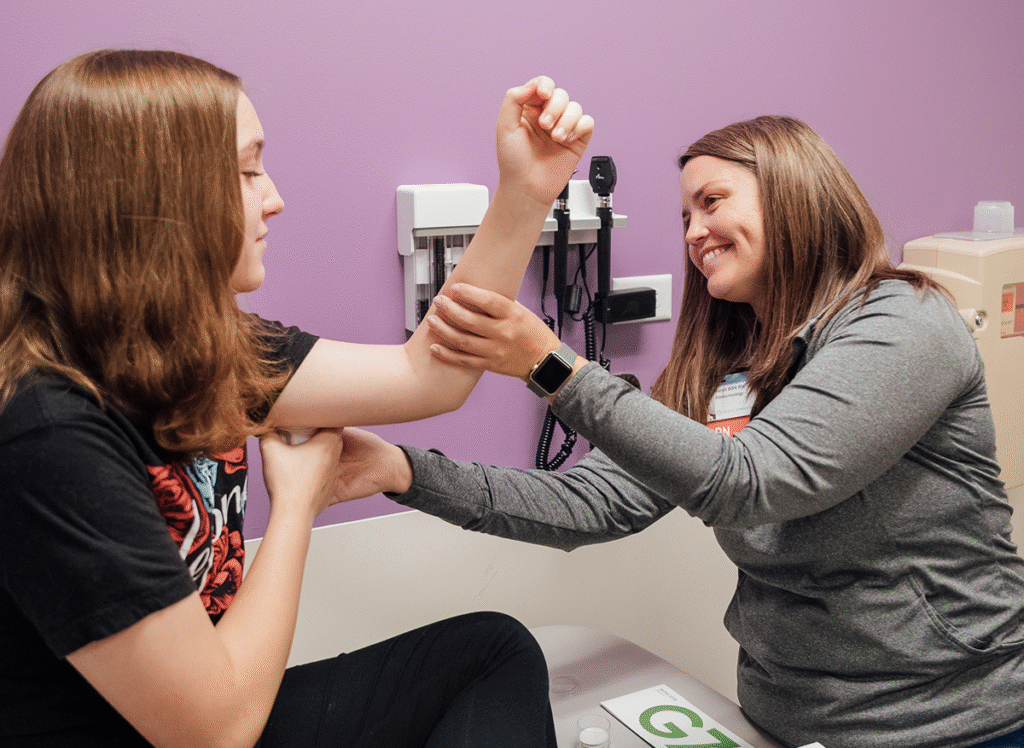

schedule for meal times
Short-acting insulin meal doses can be given either right before or after the meal. Your doctor will determine the doses.
- Older children (8 years and older) pre-meal: School age or older will need to give the short-acting insulin just prior to the meal.
- By giving the short-acting insulin just prior to the meal, the blood sugars will not go as high after eating. This results in better blood sugar control.
- Younger children (under 8 years old) post-meal: For younger children, short-acting insulin needs to be given right after the meal.
- Younger children are given their insulin right after eating due to the child not being able to tell what they are going to eat specifically. If the short-acting insulin was given before and the child does not eat the full carb amount, this will put them at risk of low blood sugars.
- Once younger children are able to tell what they are going to eat at meals, the short-acting insulin dose should be given before the meals.
correction dose + carb dose = total short-acting insulin dose
exercise and its benefits
Exercise helps control diabetes! Eating right, taking your medications and exercising are the three main things you need to do for good diabetes control.
many benefits of exercise:
- Exercise can make your blood sugar go down. The drop in blood sugar can occur hours after the activity.
- Exercise will help keep your blood sugar and cholesterol down.
- Exercise can help you cope with the stress of daily life.
- Exercise can help you sleep better.
- Exercise helps burn fat, and helps to reach and maintain a healthy body weight.
Talk to the doctor about what kind of exercise is good for your child and how much he/she should do.


general health care tips
Good hygiene is important for everyone. People with diabetes need to be aware that diabetes control may be affected if good health habits are not maintained.
As your child gets older, you should encourage him/her to not smoke. It can increase risk for complications later.
Watch cuts/wounds closely. Tell your doctor about any cut that is healing too slowly or not at all.
Don’t get sunburned. Sunburns are damaging to the skin. They can cause higher blood sugars.
Dress warmly for cold weather. Frostbite could be very damaging.
Get plenty of sleep. Fatigue affects everyone’s performance and can affect blood sugars.
- See the following regularly:
- Your endocrinologist.
- Your pediatrician or family doctor for annual check-ups, including immunizations and acute illness. This doctor will also provide sports physicals.
- Dentist – Diabetes can increase the risk for gum disease and tooth decay.
- Ophthalmologist (eye doctor) – Your child should have an eye exam done after initial diabetes diagnosis and then once a year after that. You should tell the eye doctor that your child has been diagnosed with type 2 diabetes. The eye doctor will need to dilate your child’s eyes for the examination.
- As your child gets older, you should encourage him/her to not smoke. It can increase risk for complications later.


always carry with you
The following is a suggested list of items you should carry with you:
- Blood glucose testing supplies including meter, testing strips, lancets and alcohol wipes.
- Insulin syringe, pen or vial(s) of your rapid/short acting insulin.
- Treatment for low BG, including food (juice box, fun-size Skittles, fruit snacks), glucose chew tabs, glucose gel and/or glucagon kit.
- A copy of all settings for your pump (basal rates, ratios, sensitivity factor, target blood glucose, etc.) If you have battery failure or a problem with the pump and have to call the doctor after hours, the doctor may not have this information available to them at the time of your call. It is vital for you to have this available at all times.
- Medical identification card with contact information for your physician and emergency contacts.
foot care
Because diabetes may affect the blood circulation in our legs and feet, people with diabetes must take especially good care of their feet. Diabetic children usually have good circulation. However, as your child grows into adulthood, this circulation may decrease. Good foot care will become more important.
For foot care to become routine, children need to be taught how to take care of their feet early. Taking a few extra minutes every day to do foot care may prevent serious complications later.


- Inspect (look over carefully) your feet every day. Watch for cracks, blisters, sores and any signs of infection (redness, discoloration, swelling, pus). Call your doctor if you notice any signs of infection.
- Avoid injuries to your feet. For a person with uncontrolled diabetes, the chances of a blister or cut becoming infected are greater.
- Keep your feet covered. Wear shoes or slippers everywhere, even around the house or while at the pool or beach.
- Wear clean cotton socks, which will help absorb moisture.
- Diabetic socks are not necessary.
- Avoid wearing anything tight on the feet or ankles that would slow the blood flow to the feet.
- Wash your feet every day in warm (not hot) soapy water and rinse them well. Dry your feet by patting them with the towel instead of rubbing. At this time, apply lotion to any rough spots so that the skin will not crack.
- Keep toenails trimmed straight across. File down any sharp edges.
- Avoid shoes that rub or do not fit well. These could cause blisters.
- Rub corns daily with a pumice stone. Trimming them or applying commercial corn remedies may cause harm to your feet.
- Keep feet warm by wearing socks. Do not use hot water bottles or heating pads on your feet. Avoid sun burning your feet.

coordinating with your child’s school
- School nurse. Before your child returns to school after diagnosis, set up a meeting with the school nurse to talk to them about your child’s diabetes.
- Each school has a plan for students with diabetes. Meeting with the school nurse will allow you to learn about your child’s school plan and ask questions before your child returns to school.
- School forms. The diabetes team will provide your child’s school with forms specific to your child’s diabetes care needs.
- Sports. Your child can participate in any sport.
- A statement regarding diabetes care may be requested by the coaches or trainers. The diabetes team can provide that.
- Sports physical forms will need to be completed by your primary care physician.
topics to discuss:
- Blood sugar checks – If your child needs to have their blood sugar checked while at school, you should inform the school what time it should be checked. You’ll also need to provide the school with a meter and testing supplies. You should set up a schedule with the school regarding how often they should send the blood sugar logs home.
- Low blood sugar – If your child is on medication that can cause low blood sugar, you should discuss the symptoms with the school that your child has experienced with the lows (if applicable), and the treatment of low blood sugar.
- Meal plan – Know what time your child will eat at school, and discuss where low blood sugar supplies will be kept.
- Most schools require a care plan for your child’s diabetes care while he/she is at school. Make sure you give the school’s name and fax number to the diabetes team, and sign a Release of Information so that we can send the care plan to the school.


travel tips
Having diabetes should not interfere with vacation or travel plans. It is very important, though, that you plan ahead. By planning ahead for diabetes care, you will minimize or prevent any diabetes related problems. Also, you should discuss your travel plans with your child’s diabetes doctor in advance.
what should you do on vacation?
- Always carry your child’s medication with you. Do not place it in the trunk, glove compartment or dashboard of the car. Always keep it with you in your carry-on luggage.
- Stay on the meal plan! Always carry food for meals and snacks with you to decrease the possibility of low blood sugar.
- Always carry a quick sugar source with you to treat low blood sugars.
- Continue blood sugar testing like you do at home. You may need to do more frequent checking when traveling and when being more active than usual.


- Be prepared with extra diabetes testing supplies.
- Carry a prescription from the doctor for extra medication in case you lose your child’s supply.
- If traveling by plane, you may need a letter from the diabetes doctor. Please give the doctor your travel itinerary as early as possible. check with the airline to see what they require.
- If traveling in different time zones, request medication adjustments from the doctor as early as possible.
- Know where to go in an emergency situation. You may either call the local diabetes association, (search for their information online) or go to the local hospital emergency room.

community resources
There are many organizations that work with diabetes locally, by state and nationally. Some of these organizations provide information, support groups and education. Other organizations and in funding research for a cure.
The following organizations or groups are available to support you! For more information and to find the most up-to-date contact information, check their websites or childrensdayton.org.
- Diabetes Dayton (DD) – A group of health professionals who offer telephone counseling, support, literature and information expos.
- diabetesdayton.org or 937-220-6611
- Camp Tiponi – This is a summer camp for children and teens with type 2 diabetes sponsored by Diabetes Dayton. Call 937-220-6611 for more information.
- American Diabetes Association – This is a national organization for health professionals and people with diabetes that is also active on the local and state level. They publish the “Forecast” magazine.
- diabetes.org or 937-297-0002
- Dayton Children’s Hospital endocrinology department – At Dayton Children’s, the diabetes team is available to every family of a child with diabetes. Our team is made up of pediatric endocrinologists, diabetes nurse educators, dietitians, a medical social worker and psychologist.
- childrensdayton.org or 937-641-3487
- Diabetes resource center: childrensdayton.org/diabetesresources
- Individual counseling is available through a referral by your primary pediatrician or family doctor.
- childrensdayton.org or 937-641-3487
- Family Support Group Meetings – Available at Dayton Children’s Hospital. Please call 937-641-5300 for dates, times and location.


online resources and useful apps
Please be aware that the information found on the internet is not always accurate. The information may also be sponsored by pharmaceutical companies. The people who you encounter on the internet may have a different level of education and may not have good diabetes control. Please discuss any questions you have with your child’s diabetes team.
additional online resources
To look up food to get nutritional information (carbohydrate content, calories, fat, etc.), both nutritiondata.com and calorieking.com are helpful.
Check out childrensdayton.org for more resources too, including Pinterest boards with snack and meal ideas.


smartphone apps
Don’t have an iPhone? Go to your app store on your smartphone and search “diabetes.” For Apple products, visit the app store to check out the following apps and more. Some are free, some cost up to $5.
- Carb counting with Lenny the Lion (free app from Medtronic) shows children how many carbs are in various foods by showing serving sizes and pictures. It also offers games on carbs.
- Glucose Buddy and AgaMatrix: Free apps to track and log glucose, insulin, carbs, weight, etc. all in one place. The information can be emailed to you, your family members, or the diabetes doctor.
- Go Meals (free), Carb Master (costs $0.99), and Fast Food Calories (costs $0.99 for Pro version, non-pro version is free): Help you to count carbs in meals.
here when you need us
Whether you’re looking for the right provider, ready to make an appointment, or need care right now—we’re here to help you take the next step with confidence.
